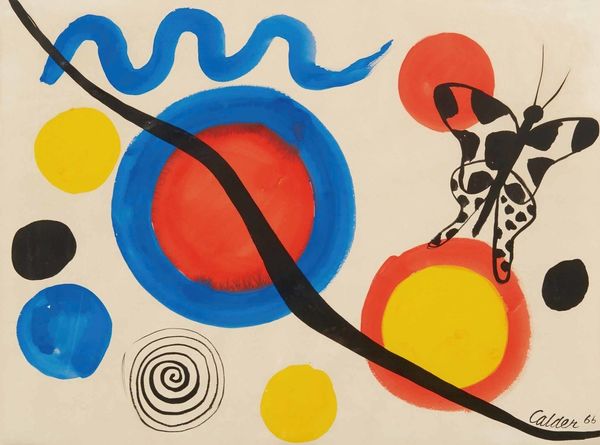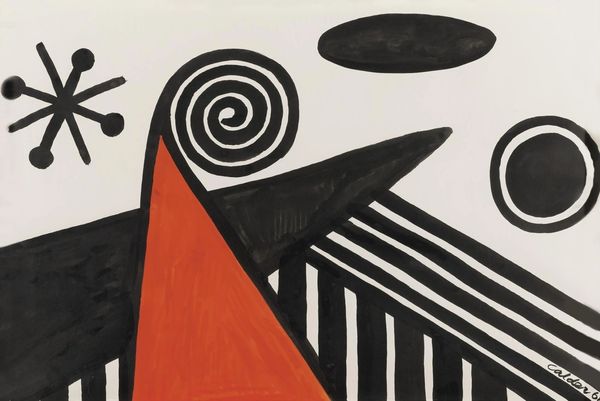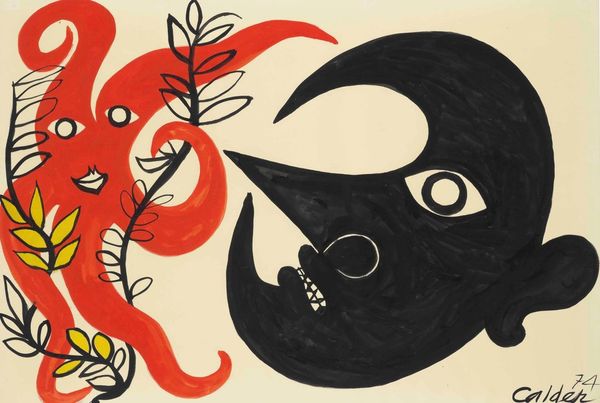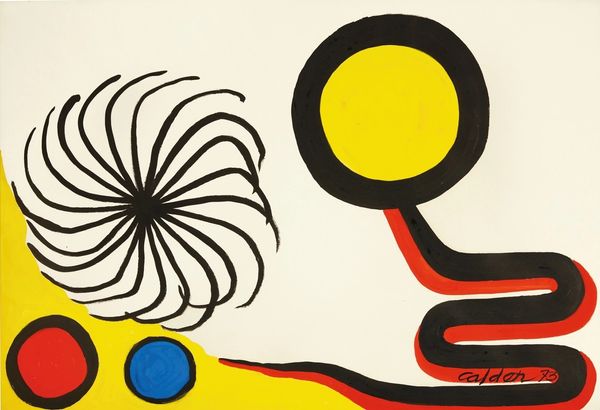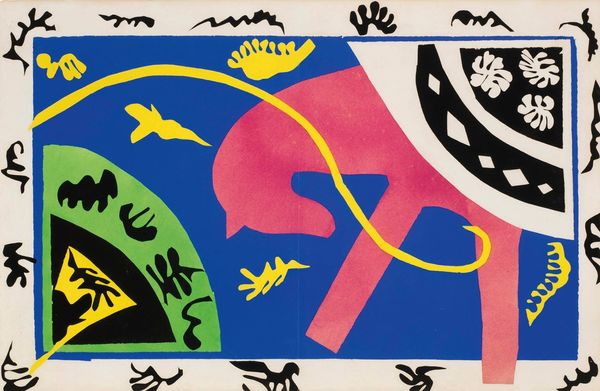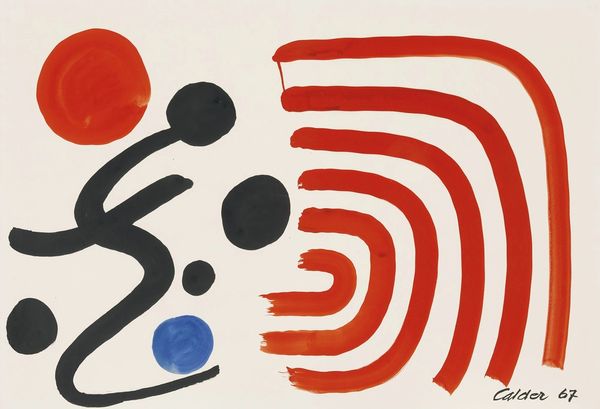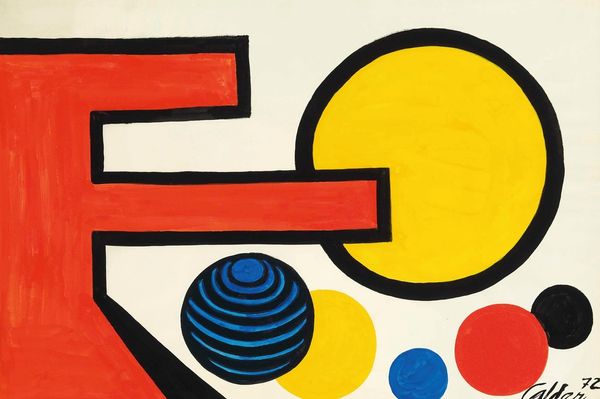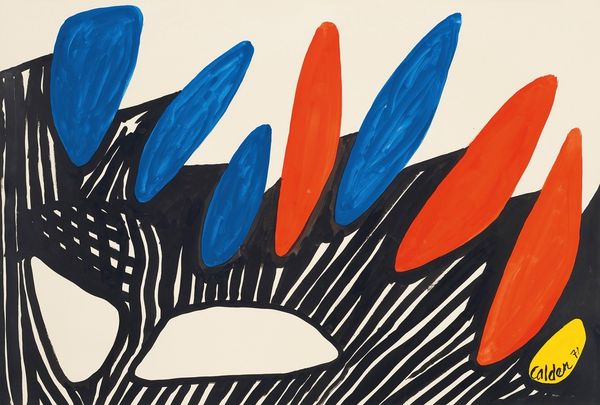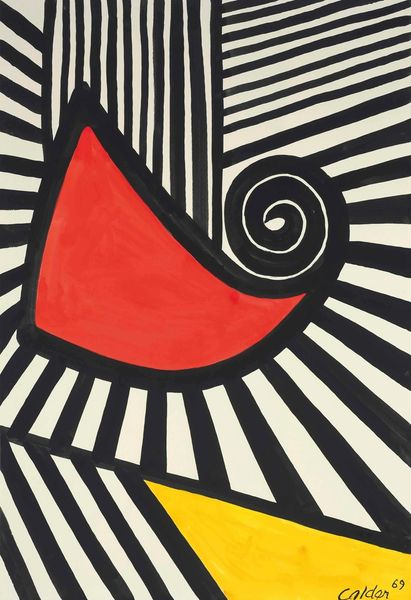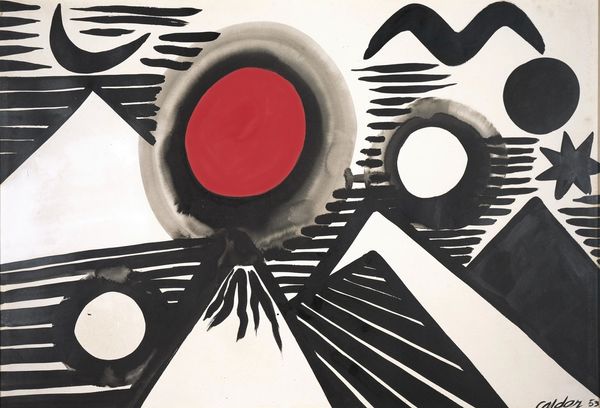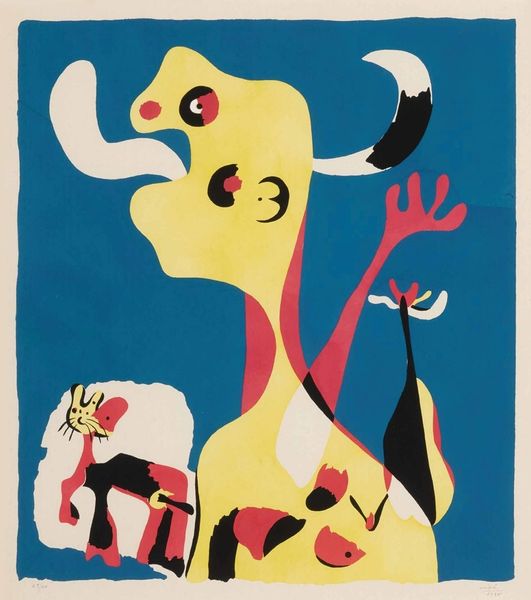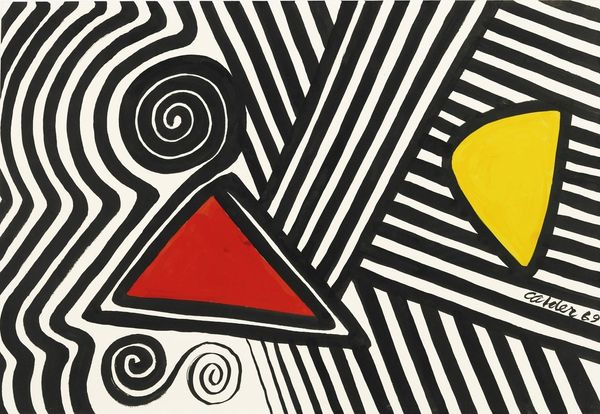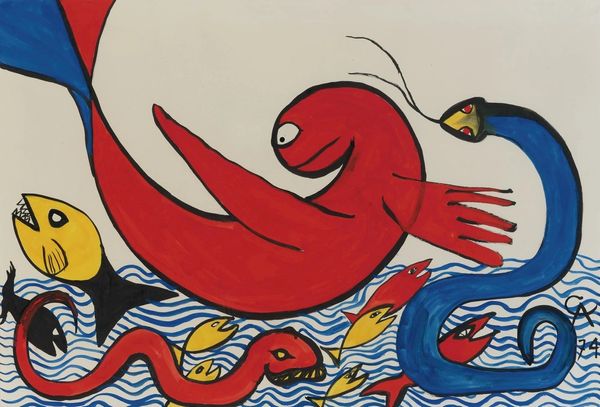
mixed-media, painting
#
mixed-media
#
painting
#
abstract
#
form
#
geometric
#
line
Copyright: Modern Artists: Artvee
Curator: Let’s consider Alexander Calder's mixed-media painting, “Elephant by the Pyramid,” completed in 1956. The composition features precisely rendered shapes and figures on a flat plane, including—yes—an elephant and a pyramid, as the title states. What is your immediate response to it? Editor: There is something playfully unsettling about this piece; the stark simplicity almost feels menacing. A feeling reinforced, perhaps, by the somewhat menacing serpents? The red circle is bold, yet the space around each figure amplifies the stark quality. Curator: Absolutely. Think about how we remember the form of an elephant, or of a pyramid—simplified into basic lines and shapes, and colored primarily with black. Calder uses a sort of visual shorthand that taps into our collective understanding of these icons. It feels almost…ancient. Editor: Yes, this connects deeply with histories of image-making that privilege certain symbols over others—the elephant as a beast of burden and of cultural significance throughout multiple colonized parts of the world, the pyramid as an undeniable marker of wealth, power, and exploitation, both rendered into caricatures…what are we to glean from this contrast? Curator: And what to make of the stylized serpents, with all their mythological baggage? These figures represent the archetypes: life and death, male and female, good and evil—it's as if Calder distilled universal symbols, rendering a space where they all might interact with each other, where all narratives co-exist. Editor: Given that he was working at a moment heavily defined by post-war existential angst, do you think it’s possible to see a more ominous subtext in these juxtapositions? The simplicity almost becomes an erasure. What do these stark symbols obscure about the realities behind the historical narratives that we have collectively inherited? Curator: A compelling perspective. He isn’t necessarily endorsing, or validating these narratives, just highlighting our familiarity with them as icons. The figures exist purely as forms. It comes back to his lifelong preoccupation with lines, and form as a basis of visual language and experience. Editor: In its starkness, it's less about the reality of an elephant and pyramid and more about how their simplified images perpetuate certain modes of knowledge—whose elephants, whose pyramids? Ultimately, Calder’s formal reduction creates fertile ground for socio-historical speculation. Curator: Indeed, his capacity to reduce culturally significant images into such fundamental forms opens space for complex reflection. Editor: I will remember this work as an unsettling encounter, that continues to resonate with complex ideas about identity, history and representation.
Comments
No comments
Be the first to comment and join the conversation on the ultimate creative platform.
